In the arrangement shown in fig, pulleys D and E are small and frictionless. They do not rotate byt threads slip over then without friction and their masses being 4kg and 11.25 kg, respectively. While the masses of blocks A,B, and C, are 2m,mandm',respectively. when the system is released from rest, downward accelerations of blocks B and C relative to A are found to be 5ms−2and3ms−2, respectively. Calculate:
a. Acceleration of blocks B and C, relative to the ground.
b. Mass of each block (g=10ms−2)
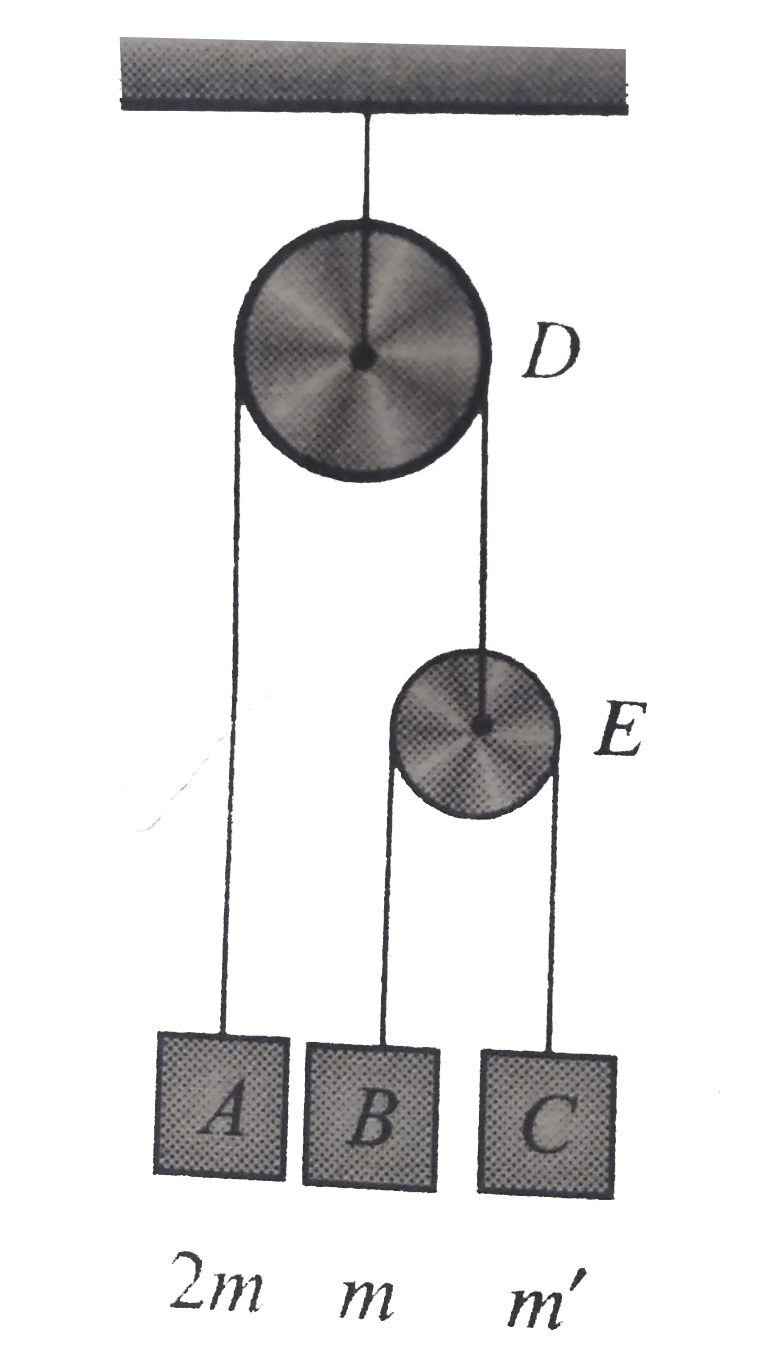
2ms−2 downwards
1ms−2 upwards
3ms−2 upwards
1.5ms−2 downwards
The correct Answer is:B
Acceleration of dirrerent objects is shown in figure. All the acceleration are w.r.t. ground
Given : a3=a4 ..(i)
a2+a1=1 ..(ii)
a3+a1=5 ..(iii)
from fig, we can write
−a5=a2+a32..(iv)
a1=a4+a52 ..(v)
Solving the above equations, we get
a1=2ms−2,a2=1ms−2,
a3=a4=3ms−2.

Topper's Solved these Questions
- NEWTON'S LAWS OF MOTION 1BOOK - CENGAGE PHYSICS ENGLISHCHAPTER - NEWTON'S LAWS OF MOTION 1EXERCISE - Integer
5 Videos
- NEWTON'S LAWS OF MOTION 1BOOK - CENGAGE PHYSICS ENGLISHCHAPTER - NEWTON'S LAWS OF MOTION 1EXERCISE - Assertion-reasoning
15 Videos
- MISCELLANEOUS VOLUME 2BOOK - CENGAGE PHYSICS ENGLISHCHAPTER - MISCELLANEOUS VOLUME 2EXERCISE - INTEGER_TYPE
10 Videos
- NEWTON'S LAWS OF MOTION 2BOOK - CENGAGE PHYSICS ENGLISHCHAPTER - NEWTON'S LAWS OF MOTION 2EXERCISE - Integer type
1 Video
Similar Questions
In the arrangement shown in fig., all pulleys are smooth and massless. When the system is released from the rest, acceleration of block 2 and 3 relative to 1 are 1ms−2 downwards and 5ms−2 downwards, respectively. Acceleration of block 3 relative to 4 is zero.

Find the absoulte acceleration of block 4.
View SolutionIn the arrangement shown in fig., all pulleys are smooth and massless. When the system is released from the rest, acceleration of block 2 and 3 relative to 1 are 1ms−2 downwards and 5ms−2 downwards, respectively. Acceleration of block 3 relative to 4 is zero.

Find the absoulte acceleration of block 2.
View SolutionIn the arrangement shown in fig., all pulleys are smooth and massless. When the system is released from the rest, acceleration of block 2 and 3 relative to 1 are 1ms−2 downwards and 5ms−2 downwards, respectively. Acceleration of block 3 relative to 4 is zero.
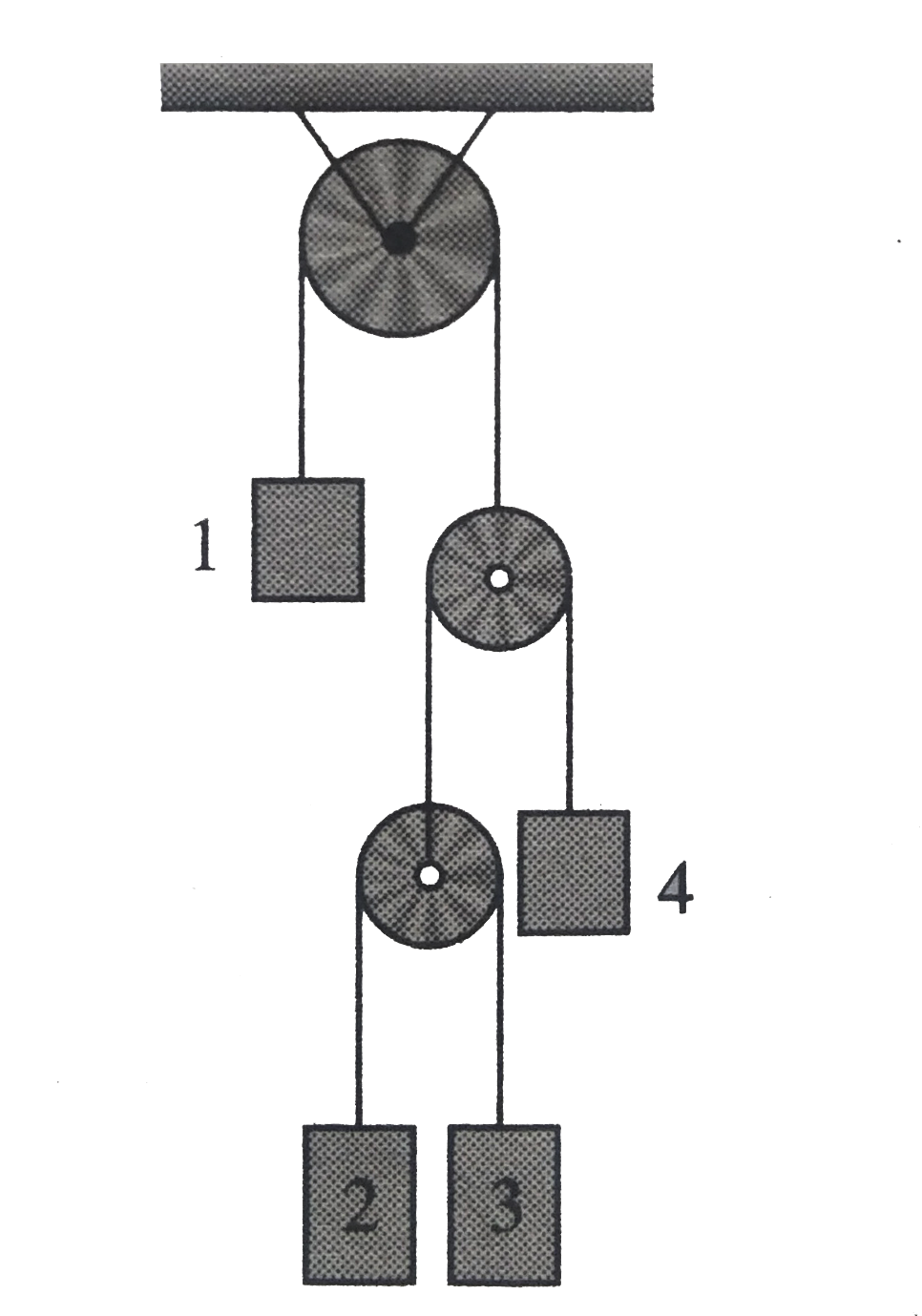
Find the absolute acceleration of block 1.
View SolutionIn the arrangement shown below, pulleys are mass-less and friction-less and threads are in-extensible. Block of mass m1 will remain at rest if :

View SolutionIn the arrangement , shown below pulleys are massless and frictionless and threads are inextensible , block of mass m1 will remain at rest if
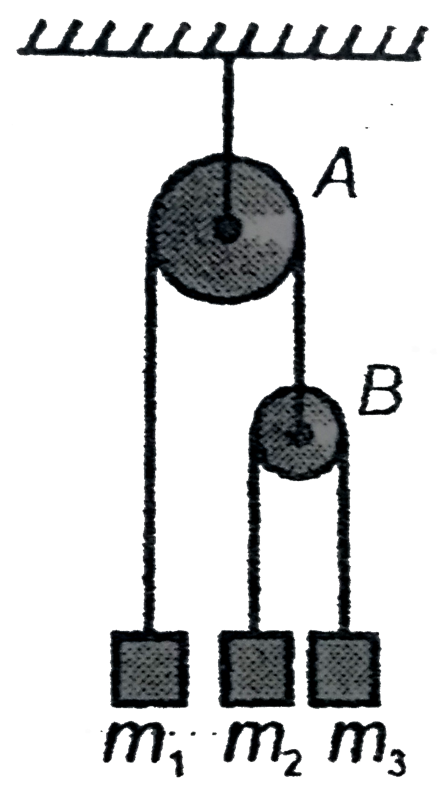
View SolutionIn the arrangement shown the fixed pulley is massless and frictionless. If the acceleration of block of mass 1kg is 30xm/s2. Find the value of x.
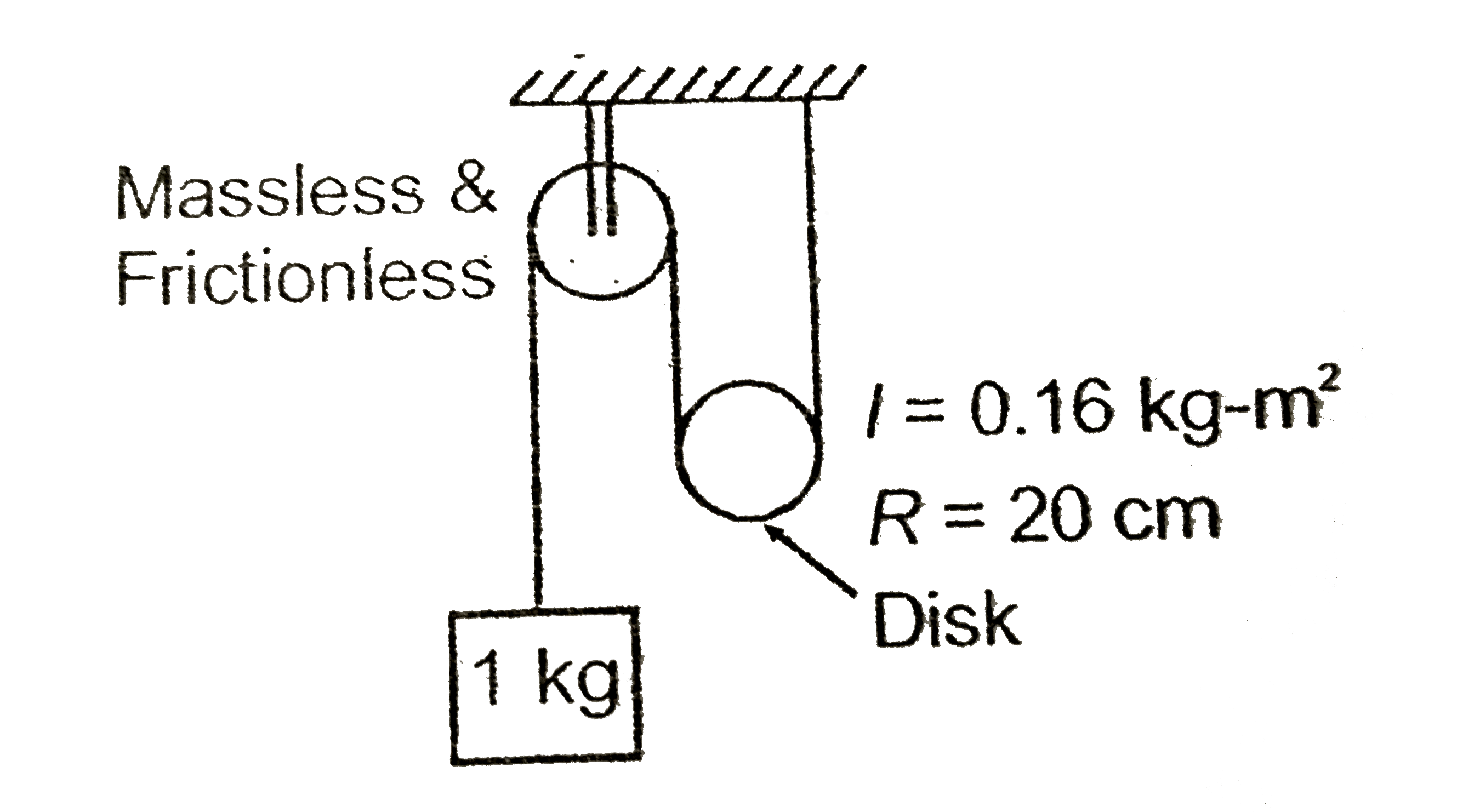
View Solution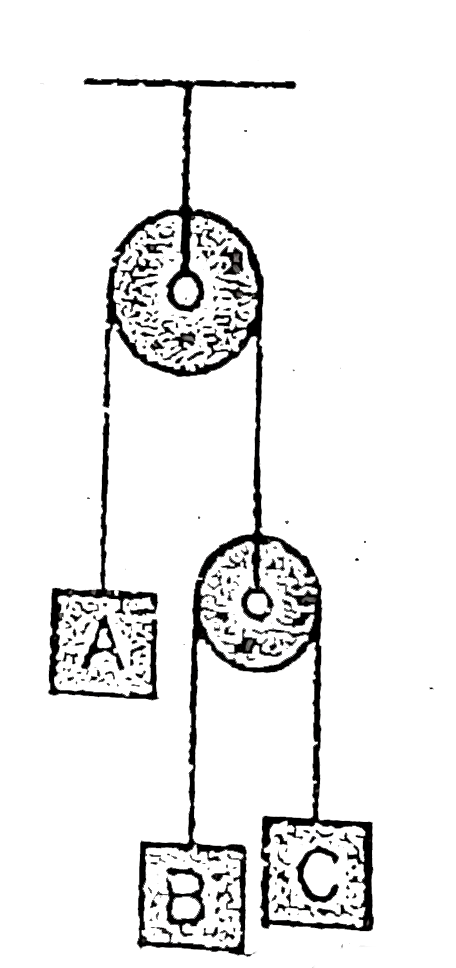
Three blocks A, B and C havig masses m kg, 2kg and 3 kg are attached by massless strings and ideal pulleys as shown in the figure. When the system is realeased from rest if the block A remains stationary. the mass of block A is
View SolutionTwo blocks 'A' and 'B' having masses mA and ma, respectively are connectd by an arrangement shown in the figure. Calculate the downward acceleration of the block B. Assume the pulleys to be massless. Under what condition will block A have downward acceleration?
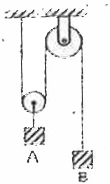
View SolutionIn the system shown in fig., mA=4m, mB=3m, and mc=8m. Friction is absent everywhere. String is inextensible and light. If the system is released from rest, then

Acceleration of Block B is
View SolutionIn the arrangement shown in Fig there is no friction between of mass 2m and ground but there is friction between the block of masses m is stationary with respect to block of mass 2m The value of friction between m and 2mis
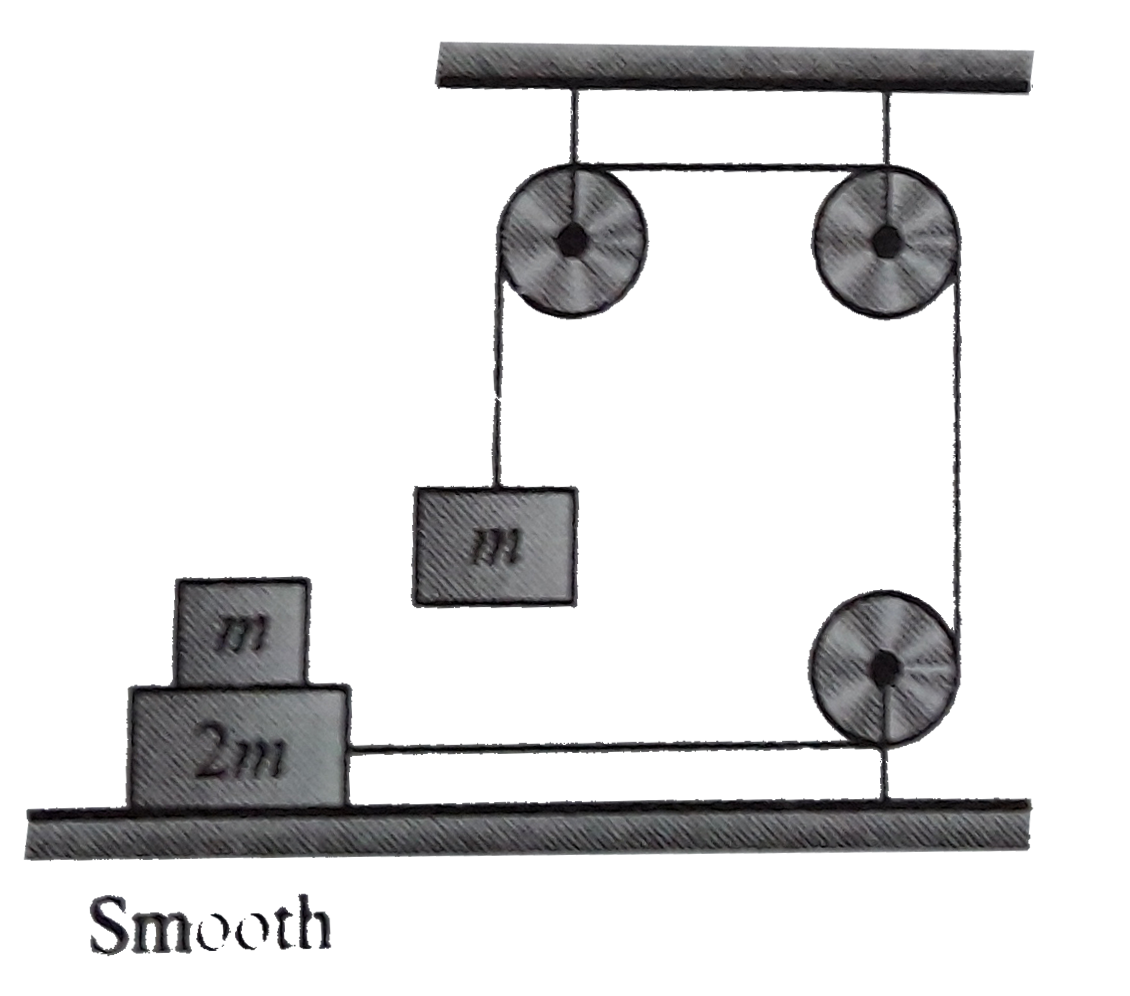
View Solution
